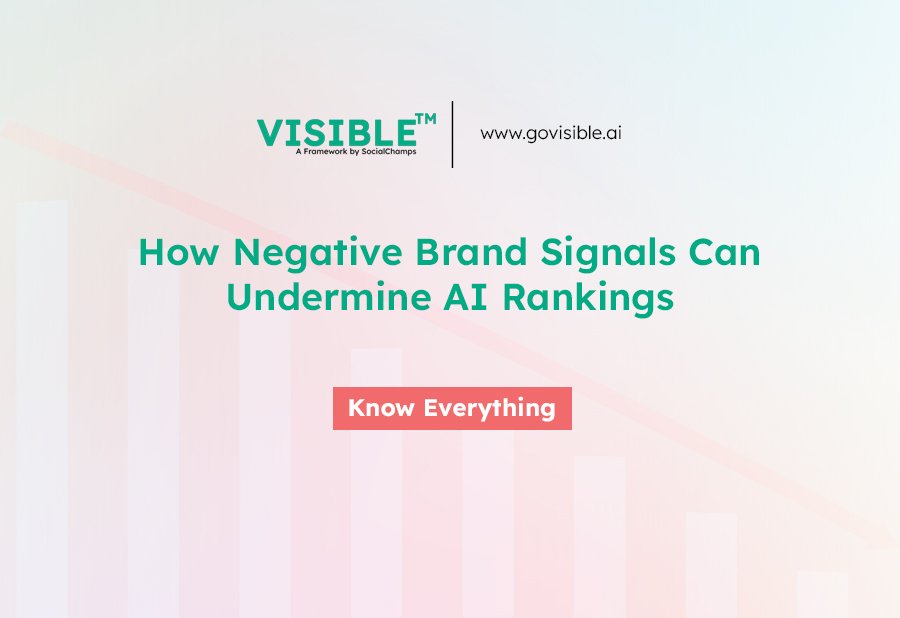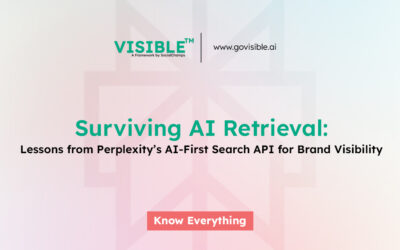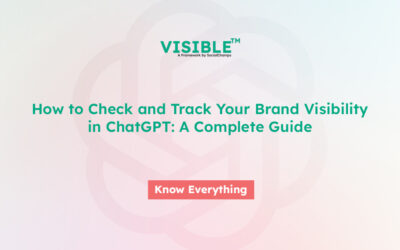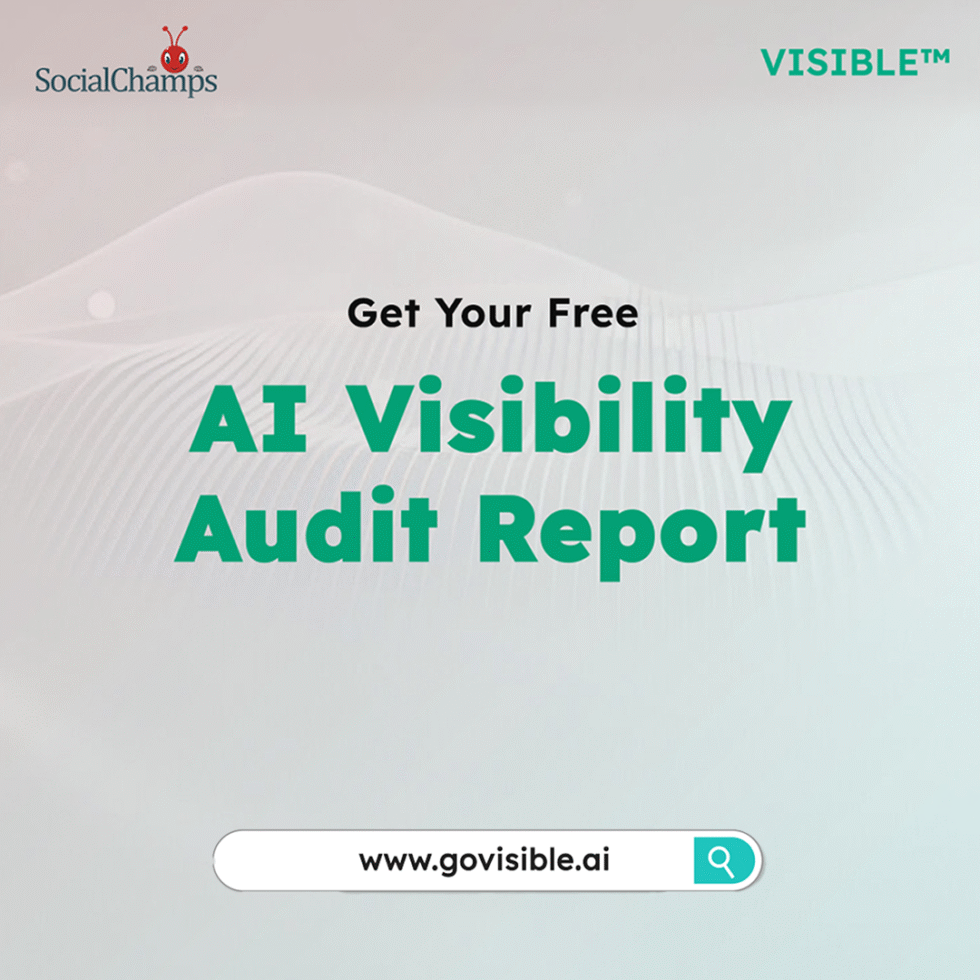What Are Negative Brand Signals?
In the GEO, trust isn’t won through keywords. It’s earned through signals.
At VISIBLE™, we define Negative Brand Signals as any digital cues that degrade a brand’s perceived reliability or integrity within AI-driven ranking systems. These include public backlash, consumer fraud accusations, hostile media coverage, spammy mentions, and unresolved customer service failures. Unlike traditional SEO penalties, these signals trigger probabilistic distrust in the AI Visibility Graph that informs language model outputs.
Defining the Signal Spectrum: From Noise to Penalty
Brand signals exist on a polarity spectrum:
- Neutral Signals: Mentions without opinion or consequence
- Positive Signals: Endorsements, awards, praise in high-authority contexts
- Negative Signals: Complaints, fraud reports, lawsuits, scam accusations
Not all negative signals are equal. A tweet with 12 likes calling your service “trash” is not the same as an FTC complaint indexed on government domains or a viral boycott covered by NPR. AI systems don’t treat them equally either. LLMs use Signal Weighting to differentiate between low-impact noise and citation-level threats.
AI Interpretation of Sentiment and Citation Polarity
Generative models are trained to infer trustworthiness from both semantic tone and citation ecosystems. A Reddit thread tagging your brand in a financial scam? That creates citation polarity far beyond its traffic weight. LLMs like GPT-4 and Gemini use embeddings that cluster negative sentiment across citation layers. One signal may trigger visibility deboosting, especially when echoed by other third-party sources.
How AI Inference Models Interpret Negative Sentiment
Transformer models correlate word vectors for tone, context, and trust. A phrase like “brand X stole my money” activates not just sentiment filters, but risk-based suppression mechanisms when paired with citation weight.
Why Generative Engines Penalize Negative Trust Signals
Large language models are not search engines. They’re inference systems. And inference systems require trust scaffolding.
Real-World Brand Examples
- Reddit Blackouts: When moderators disabled subreddits during Reddit’s API pricing controversy, Google’s generative results collapsed due to missing third-party signals. Result? Less visibility for brands relying on Reddit citations source.
- Robinhood: After halting GameStop trades, Reddit and Twitter exploded. AI systems downgraded Robinhood’s visibility due to mass citations across low-trust sentiment clusters.
- PayPal: Accusations of holding user funds and scam-related threads on Trustpilot contributed to lower trust polarity in fintech-related generative queries.
From Sentiment to Suppression: LLM Signal Processing
Models like Claude, Gemini, and GPT-4 use fine-tuned systems that cross-check sentiment and Citation Weight against safety, legal, and integrity filters. Repeated exposure to negative signal clusters can lead to shadow suppression: outputs where your brand is quietly omitted, even when relevant.
The Role of Citation Quality in LLM Ranking
Citation Quality refers to the trustworthiness, context, and polarity of third-party sources referenced by LLMs. High traffic doesn’t equal high trust—the underlying sentiment and source integrity determine visibility impact.
The Role of Citation Quality in AI Output Selection
High Authority ≠ High Trust When Signals Turn Negative
Many brands assume that being mentioned by Forbes or TechCrunch equals good press. But a critical mention in a high-domain source can be more damaging than neutral coverage from a mid-tier publisher. Citation ecosystems are polarity-sensitive.
The Danger of Spammy or Hostile Citations
Mention farms, review aggregators, and hostile Reddit threads act like digital graffiti. One citation from a flagged site (e.g., scamadvisor.com) can cascade through co-citation networks. Generative engines track this through Entity Depth Index and penalize via Visibility Score declines.
How to Detect and Remediate Negative Signal Clusters
GoVISIBLE Platform Approach to Brand Signal Monitoring
The GoVISIBLE Platform continuously monitors:
- First-party signals: Social media, owned content, customer feedback
- Third-party citations: Media, forums, reviews, legal sites
We map these into the VISIBLE™ Framework, categorizing each by source and sentiment. Through this, we identify clusters that trigger AI distrust.
Red Flag Categories: Fraud, Scams, Backlash, Low-Trust Media
Top threat patterns include:
- Escalating fraud accusations across review platforms
- Misinformation threads in forums (e.g., Reddit, Quora)
- Clickbait media exploiting brand mishaps
- Silence: Lack of counter-narratives from official sources
“Want to know your brand’s current AI trust profile? See how the GoVISIBLE Platform helps detect negative signal clusters before they tank your visibility.”
Navigating the Post-SERP AI Landscape with Trust-Centric Strategies
Even one unresolved negative brand signal—if amplified by the wrong citation—can get your brand silently suppressed by AI models you never see. In the generative era, trust is your distribution layer.
With the GoVISIBLE Platform, we give brands a real-time dashboard to track their Visibility Score, audit citation polarity, and deploy trust-positive content where it matters.
We’re also launching a Citation Quality Scorecard — a diagnostic layer showing how each third-party reference impacts your standing in generative engines. Because if AI doesn’t trust your signals, your audience won’t even see them.
Final Thought
Negative Brand Signals are the silent killer of AI visibility. The GEO Stack demands proactive management of your trust footprint. With the GoVISIBLE Platform, brands gain the tools to intercept reputation damage before it cascades into algorithmic oblivion.






0 Comments